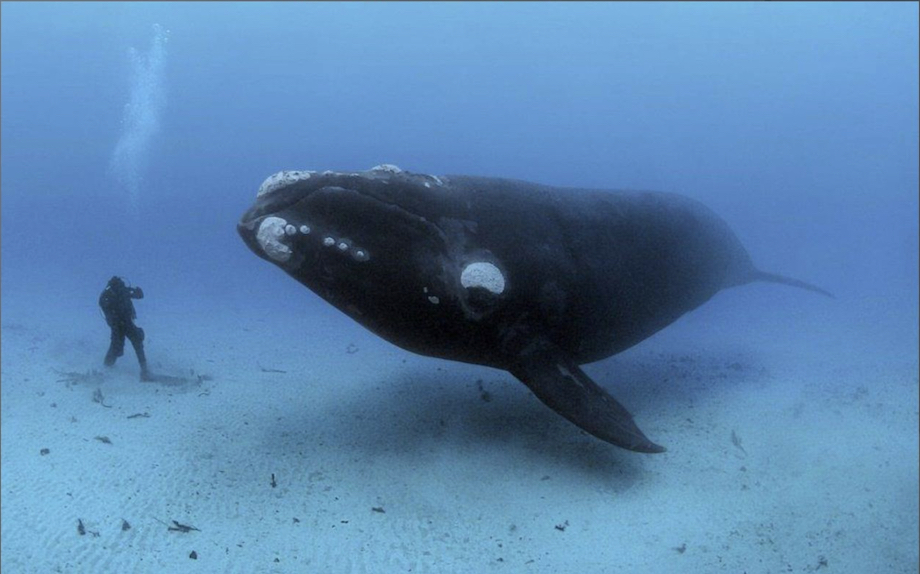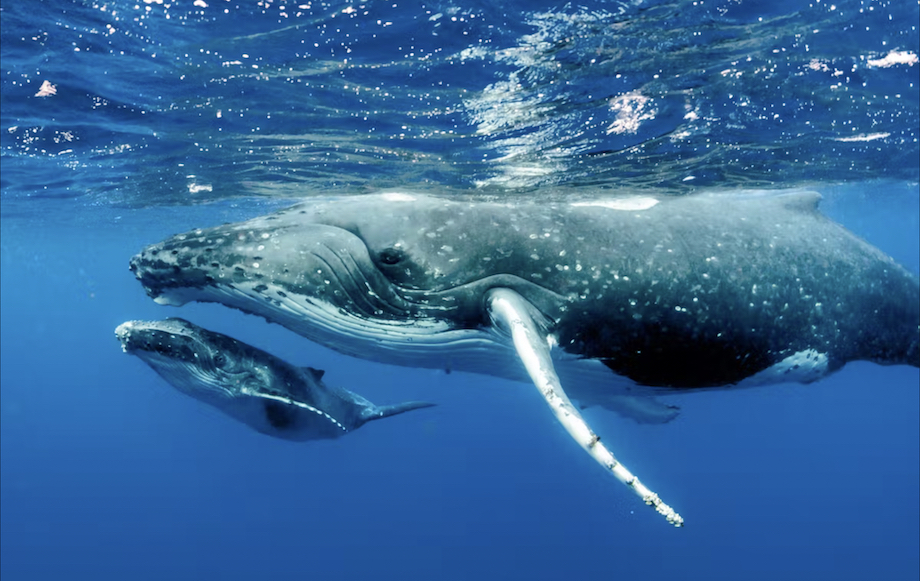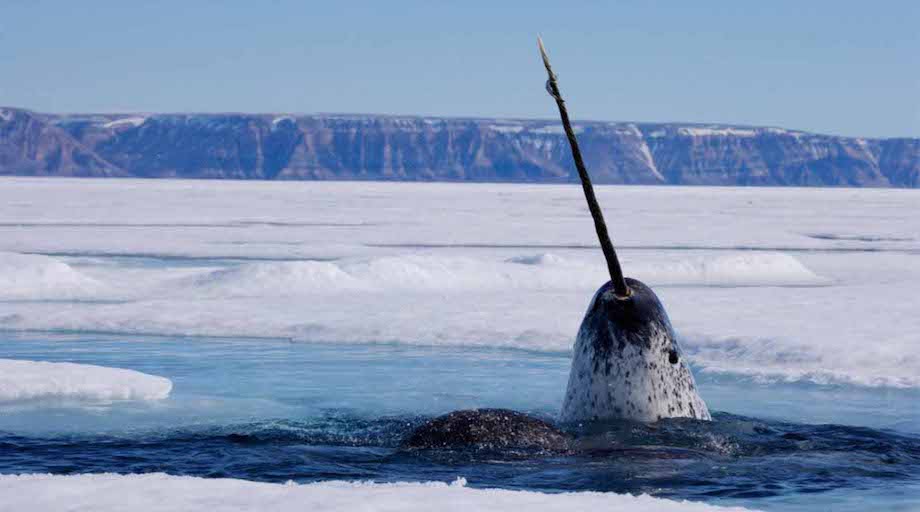
Cetacea mysticetes
Bowhead whale (Balaena mysticetus)

Bowhead whales are easily distinguished by their huge head, white chin and lack of dorsal fin. They have the longest baleen whales, growing to more than 4 m. These whales have very massive skull bones, useful for crushing ice for the purpose of breathing. Some Inuit hunters claim to have seen whales breaking ice surfaces 60 centimeters thick by this method. Females, larger than males, can reach a length of 20 meters. The blubber layer surrounding this whale is the thickest in the animal kingdom, measuring on average 43-50 centimeters. Greenland whales are found in five separate populations in the Arctic Ocean, migrating north and south with seasonal movement along the pack.
Greenland right whales (Bowhead Whales) produce a wide variety of vocalizations, ranging from constant-frequency moans to calls composed of a series of pulses that vary in intensity, frequency, duration, and interval between them. Most of their calls are simple moans in the 25-900 Hz range, but sequences of repetitive moans have also been described as songs.
Humpback whale (Megaptera novaeangliae)

Humpback whales are probably the best known of all baleen whales. They inhabit all oceans. They spend the spring, summer and fall at high latitudes and during the winter migrate to tropical areas to breed and give birth.
Humpback whales range from 16-17 m in length, and females are typically 1-1.5 m longer than males.
The long pectoral fins that are about 1/3 the length of the body, which at the top, or dorsal, is black, while both sides of the fins and the underside of the tail are white. Humpback whales often perform spectacular jumps and leaps at the surface.
Humpback whales are best known for their vocalizations that are performed in complex repeated sequences with “song” characteristics. Scientists have found that these songs are produced by males in breeding grounds as a display of male valor and to distance other reproductively active males.
They contain both tonal and pulsed sounds and change from year to year.
Humpback whales also produce rhythmic “feeding calls” that are usually about 2.5 seconds long at 500 Hz when they are in feeding zones at high latitude.
Narwhal (Monodon monoceros)

The narwhal from the Norwegian narhval, (literally “corpse whale”) is a cetacean belonging to the monodontid or delphinaptera family. We have included it in the branch devoted to mysticeti cetaceans because of the peculiarity of its “song,” although it is actually an odontocete cetacean, albeit a peculiar one: its teeth, in fact, are not functional because narwhals swallow their prey (cuttlefish, cephalopod mollusks and crustaceans) mainly whole.
The narwhal’s most striking feature is its spiral tusk: it measures up to 3 meters long and develops mainly in males as an elongated left tooth of the upper jaw. The purpose of the tusk has been debated among scientists. In the past, numerous hypotheses had been advanced about the use of the narwhal’s tusk. It was thought that it could be used as a weapon to attack other narwhals, or even boats, or to make breathing holes in the ice or harpoon fish. The latter two hypotheses can be easily refuted since, if the tusk was used for such a purpose, females would also have to possess them. Moreover, it is rather unlikely that the tusk represents a weapon because narwhals are not aggressive at all. It is more likely that it is simply a sex-related peculiarity, typical of males, such as the antlers of a deer or the fleshy lobes of a rooster’s beak. Scholars have not yet been able to give a definitive answer to this question in the absence of extensive studies on the subject. New research has found millions of nerves in tusks that may be able to detect water temperature, pressure and salinity.
Narwhals are among the few whales that inhabit only Arctic waters: their range is around 70° North, roughly level with North Cape, Norway, and from Barrow, Alaska.
Narwhals produce a variety of vocalizations, including echolocation clicks, tonal-pulsed signals and whistles. Echolocation clicks have maximum frequencies up to 160 kHz and maximum source levels of 218 dB re 1 µPa underwater.
They are repeated at rates between 2 and more than 500 per second. Pulsed tonal signals last from 0.5 to several seconds and their frequency ranges from 500 Hz to 48 kHz. Whistles typically last about 1 second and have a frequency range of 300 Hz to 48 kHz.
